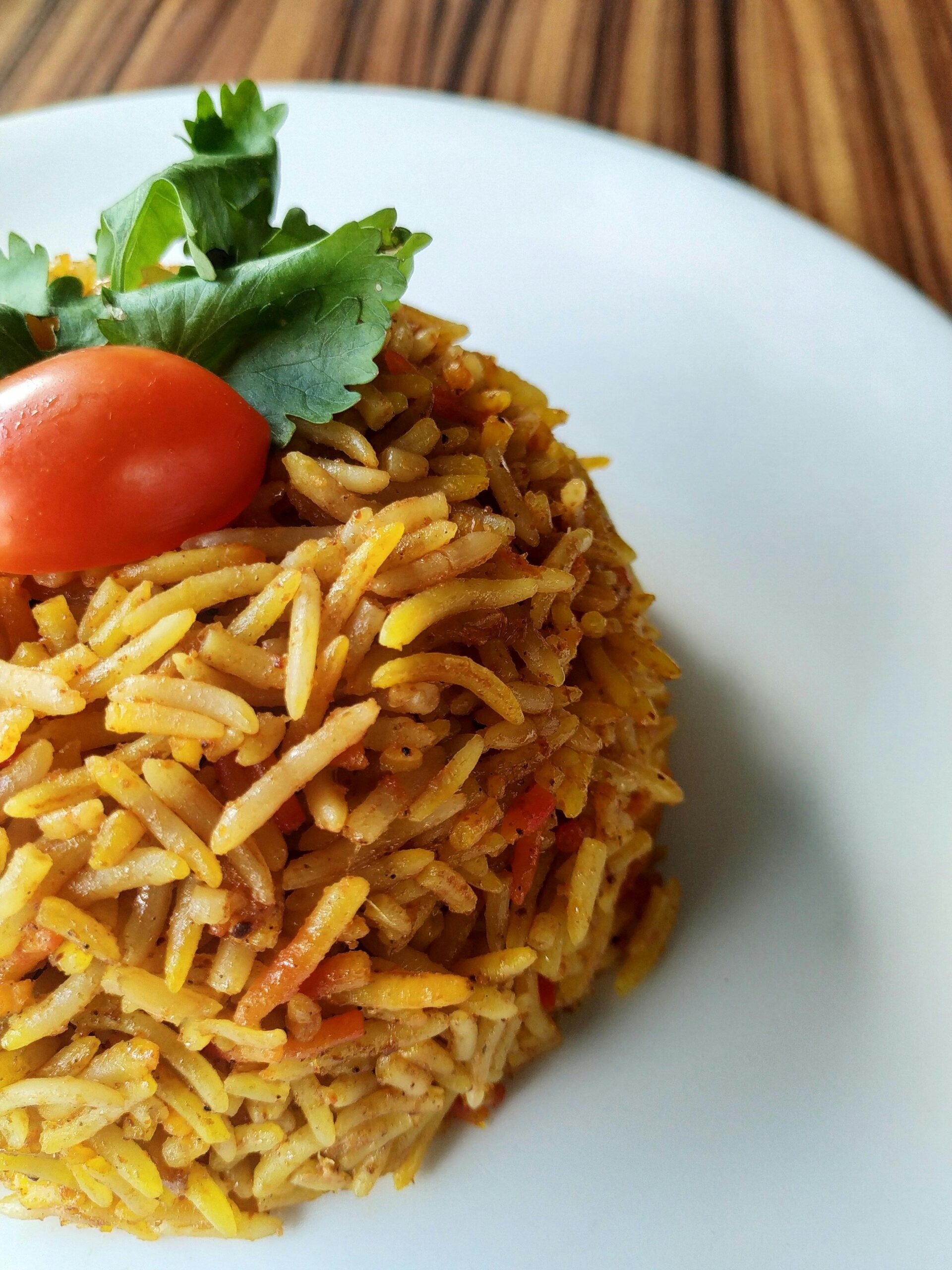Aromatic Vegetable Biryani: A Vegetarian Delight
Estimated Reading Time: 12 minutes Cuisine Type: Indian Mughlai Preparation Time: 1 hour 45 minutes Serves: 5-6 Best Season: Year-round Nutritional Values (Approximate, per serving):
- Calories: 450-500
- Protein: 12-14g
- Carbohydrates: 65-75g
- Fat: 18-22g
- Fiber: 6-8g
Special Instructions: For an authentic flavor, use long-grain basmati rice. Adjust the spice level to your preference. Serve hot with raita for a refreshing contrast.
The Allure of Vegetable Biryani
Vegetable biryani, a fragrant and flavorful creation, transcends the boundaries of mere sustenance. It is a culinary masterpiece that marries the richness of Indian spices with the wholesome goodness of vegetables. This vegetarian delight offers a symphony of tastes and textures, making it a cherished dish in households and restaurants alike.
Essential Ingredients
- For the Rice:
- 2 cups basmati rice
- 5 cups water
- Salt to taste
- A few saffron strands (optional)
- For the Vegetable Masala:
- 3 large onions, finely chopped
- 4 cloves garlic, minced
- 1-inch ginger, grated
- 2 green chilies, slit
- 3 ripe tomatoes, pureed
- 1 teaspoon cumin seeds
- 2 bay leaves
- 4 cloves
- 1-inch cinnamon stick
- 1 teaspoon coriander powder
- 1/2 teaspoon turmeric powder
- 1 teaspoon garam masala
- 1 teaspoon red chili powder (adjust to taste)
- 1/2 teaspoon cardamom powder
- 1/4 cup yogurt
- Fresh coriander leaves, chopped
- Mint leaves, chopped
- For the Vegetable Medley:
- 1 cup mixed vegetables (carrots, peas, beans, cauliflower)
- 2 medium potatoes, cubed
- Oil or ghee for cooking
Crafting a Perfect Biryani
- Prep the Rice: Rinse basmati rice thoroughly and soak in water for 30 minutes. Drain and cook in salted water until 80% done.
- Create the Masala Base: Heat oil or ghee in a large, deep-bottomed pan. Add cumin seeds, bay leaves, cloves, and cinnamon stick. Let the spices splutter.
- Sauté the Aromatics: Add chopped onions and sauté until golden brown. Introduce minced garlic and ginger, and cook for another minute.
- Blend the Flavors: Pour in tomato puree, green chilies, coriander powder, turmeric powder, garam masala, red chili powder, and cardamom powder. Cook until the raw aroma of spices disappears.
- Incorporate Yogurt: Stir in yogurt and cook until the mixture thickens slightly.
- Cook the Vegetables: Add mixed vegetables and potatoes to the masala. Cook until tender-crisp while retaining their texture.
- Layer the Delicacy: In a biryani pot, create layers of rice and vegetable masala. Seal the pot tightly.
- The Dum Technique: Cook the biryani on low heat for 15-20 minutes using the dum method for even cooking and enhanced flavor.
Ayurveda and the Art of Biryani
Ayurveda, the ancient Indian science of life, emphasizes the importance of balanced nutrition. Vegetable biryani, with its array of vegetables and warming spices, aligns with Ayurvedic principles. The combination of ingredients promotes digestion, improves immunity, and nourishes the body.
A Journey Through Time
While the exact origins of biryani remain a subject of debate, it is believed to have its roots in Persia. Over centuries, this dish evolved and adapted to Indian palates, incorporating local flavors and ingredients. Vegetable biryani is a testament to the versatility and enduring appeal of this culinary treasure.
By savoring the rich flavors and aromatic essence of vegetable biryani, you embark on a gastronomic journey that transcends time and cultures.
Here’s a video about the Supplementary dish which can be served well with biryani
From scratch to a flavorful feast! Try this easy-to-follow recipe for a delicious vegetable biryani with tongue tangling chutneys. Whether you’re a seasoned chef or a beginner, this one’s for you!
Don’t forget to like, share, and comment with your biryani-making experience! Let’s get cooking!






Very Nice I Enjoyed reading It